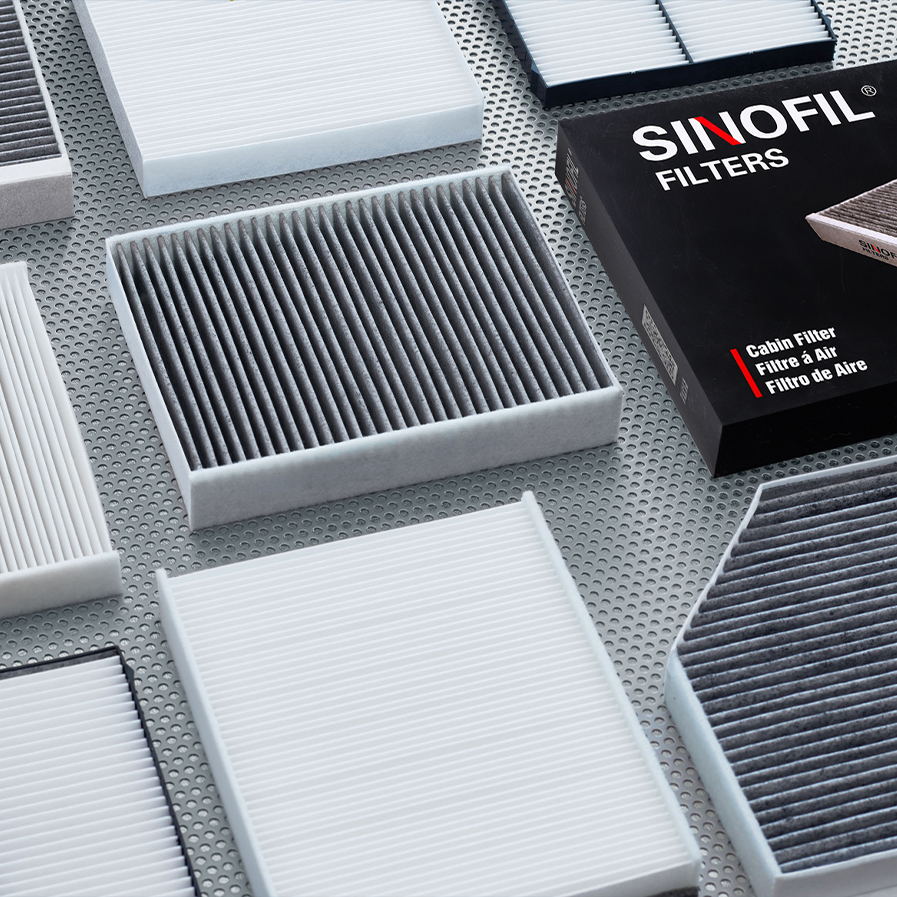Home / News / How does activated carbon in cabin filters effectively remove harmful gases?
Activated carbon plays a crucial role in modern cabin air filters, particularly in vehicles, where ensuring clean, fresh air for passengers is essential. The effectiveness of activated carbon in removing harmful gases lies in its unique adsorption properties. Unlike absorption, where substances are taken up into a bulk phase (like a sponge soaking up water), adsorption involves the adhesion of molecules to a surface. Activated carbon’s porous structure, resembling a sponge on a microscopic scale, provides an extensive surface area covered with countless nooks and crannies. This structural feature is the key to its effectiveness in capturing gases.
When air passes through a cabin filter containing activated carbon, harmful gases such as ozone (O3), sulfur dioxide (SO2), nitrogen oxides (NOx), and volatile organic compounds (VOCs) encounter the carbon surface. These gases, which are often present in vehicle exhaust fumes or from external environmental sources, are attracted to the activated carbon’s surface through weak chemical bonds. This attraction occurs because the activated carbon’s surface energy is sufficient to capture and retain gas molecules effectively.
The process of adsorption is highly selective based on the size and chemical properties of the gas molecules. Activated carbon’s pore size distribution is tailored during manufacturing to match the sizes of common gas pollutants. This specificity ensures that harmful gases are effectively trapped within the filter before air is circulated into the vehicle cabin. As a result, activated carbon filters contribute significantly to improving indoor air quality by reducing the concentration of these pollutants to levels that meet health and comfort standards.

One of the distinct advantages of active carbon cabin filters is their ability to adsorb not only gases but also odors. This dual functionality is particularly beneficial in urban environments where vehicles frequently encounter exhaust fumes and other sources of unpleasant smells. By adsorbing odorous compounds along with harmful gases, activated carbon filters enhance the overall air quality experience for vehicle occupants, providing a more pleasant and healthier environment.
Furthermore, the continuous operation of activated cabin air filters ensures ongoing protection against pollutants as long as the filter remains effective and is regularly replaced according to manufacturer recommendations. This reliability makes them indispensable in maintaining optimal indoor air quality inside vehicles, where occupants spend considerable amounts of time during daily commutes and travels.
The integration of activated carbon into cabin air filters represents a significant advancement in automotive air filtration technology. Its ability to effectively adsorb harmful gases and odors, owing to its porous structure and selective adsorption properties, ensures that vehicle occupants breathe cleaner, safer air. As environmental concerns grow and regulations regarding vehicle emissions tighten, the role of activated carbon filters in mitigating the impact of pollutants on human health continues to be indispensable. Whether in densely populated cities or on highways, the use of active carbon cabin filters underscores a commitment to both comfort and safety, making them a vital component in modern vehicle air filtration systems.



 English
English Español
Español











 ++86 183 3391 1399
++86 183 3391 1399


 +86 183 3391 1399
+86 183 3391 1399
 +86 187 3296 0060
+86 187 3296 0060 Wangshigong Village, Wei County, Xingtai City, Hebei Province, China
Wangshigong Village, Wei County, Xingtai City, Hebei Province, China
